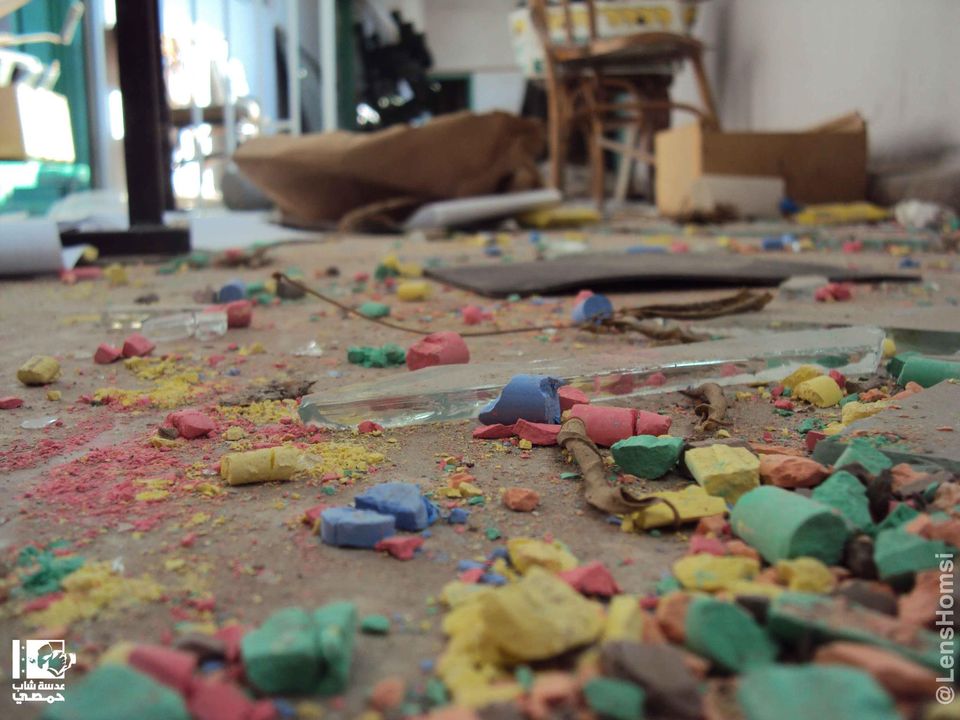
New Documents Show Syrian Government Used Schools for Military Purposes
The devastation of the Syrian conflict on the country’s education system has been widely reported since the early days of the conflict. Schools have been targeted by military airstrikes, become impromptu shelters for displaced persons, and been used for military purposes by both government and opposition forces. Today, in recognition of the International Day of Education, SJAC is publishing a sample of Syrian government documents which captures the extent to which Syria’s educational system has been ravaged by conflict. In the documents, the government clearly acknowledges its use of schools for military purposes, and recognizes the widespread destruction of schools, specifically in the Idlib region.
The two government documents, consisting of 38 pages, were among thousands that SJAC’s documentation team collected in 2013 and 2015 from abandoned government facilities inside Syria. In the documents, prepared by the Ministry of Education and addressed to the Governor of Idlib in 2013, information is provided on 410 distinct schools in the Idlib governorate. Schools are listed according to a variety of categories, including: occupied by displaced civilians, occupied by armed [opposition] groups, occupied by Syrian military forces, closed, and partially or completely destroyed. Taken together, the list offers a staggering overview of the devastation of the governate’s schools at the height of the conflict.
Document A: Classification of Schools
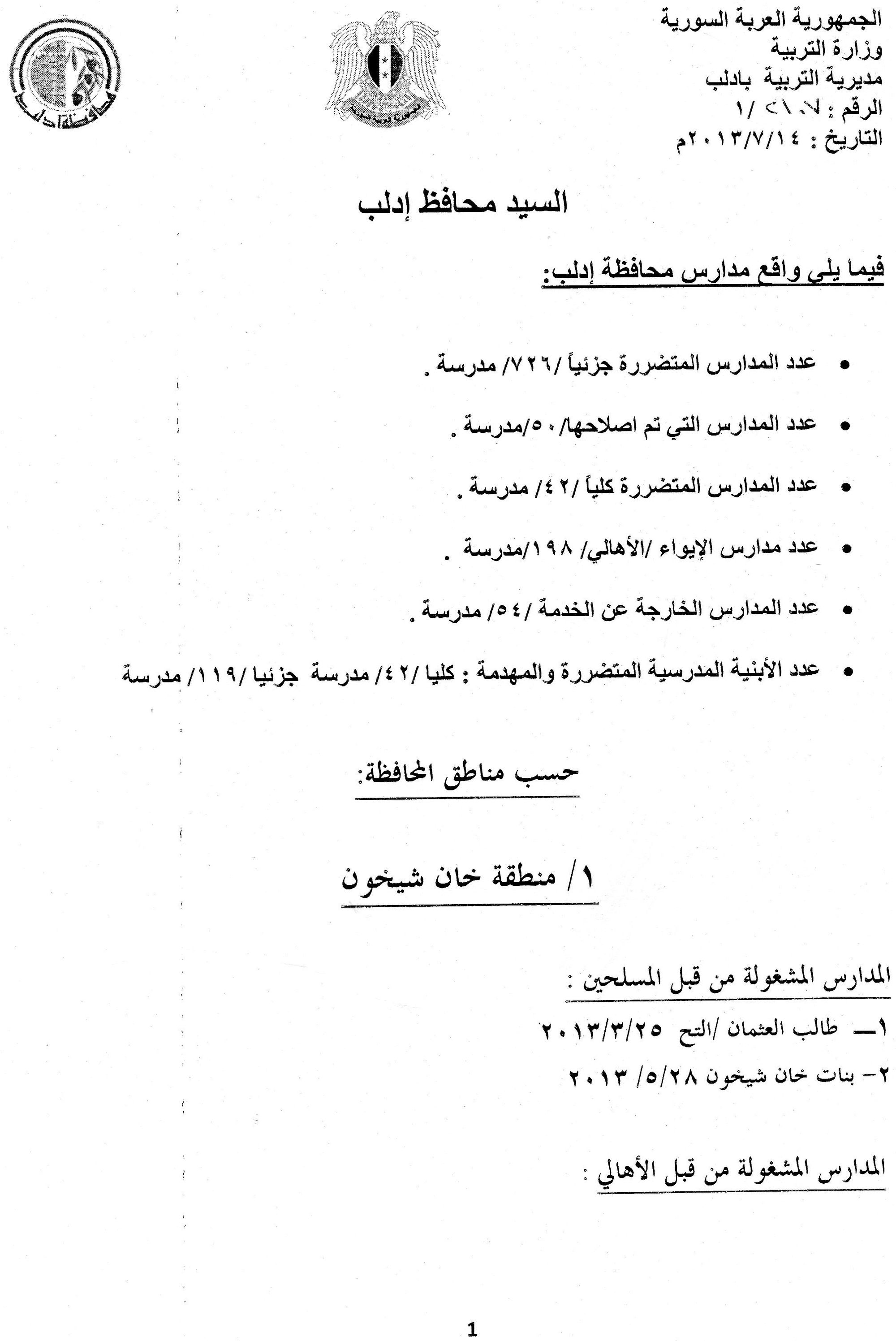
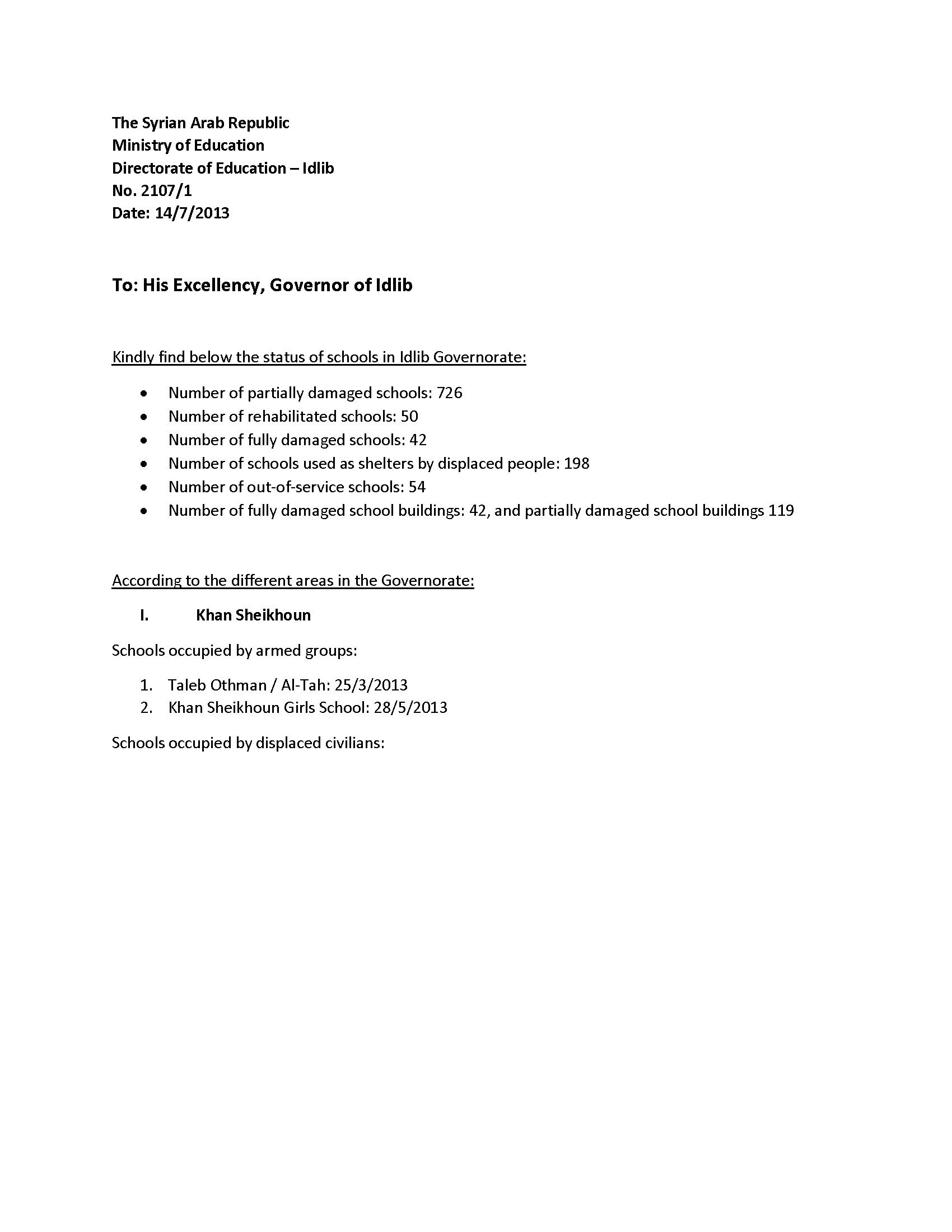
The documents include clear acknowledgement by the Syrian government of the use of nine schools for military purposes by their own forces. These nine schools are first recorded as “occupied by government forces” in a document in June 2013, and then again more than a month later in July, suggesting the schools were being utilized as military bases by Syrian government troops for an extended period of time.
Document B: Schools Occupied by the Military
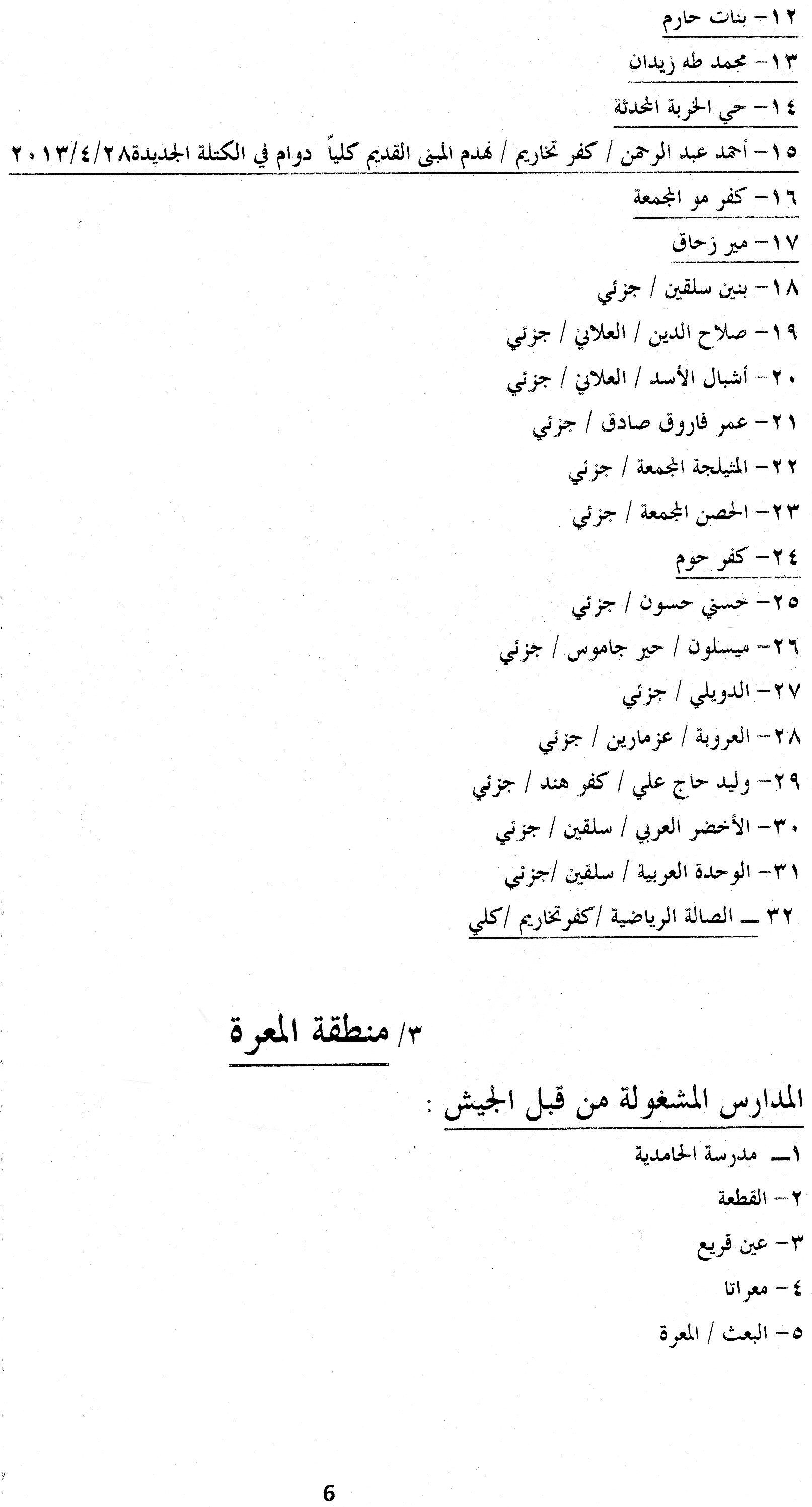
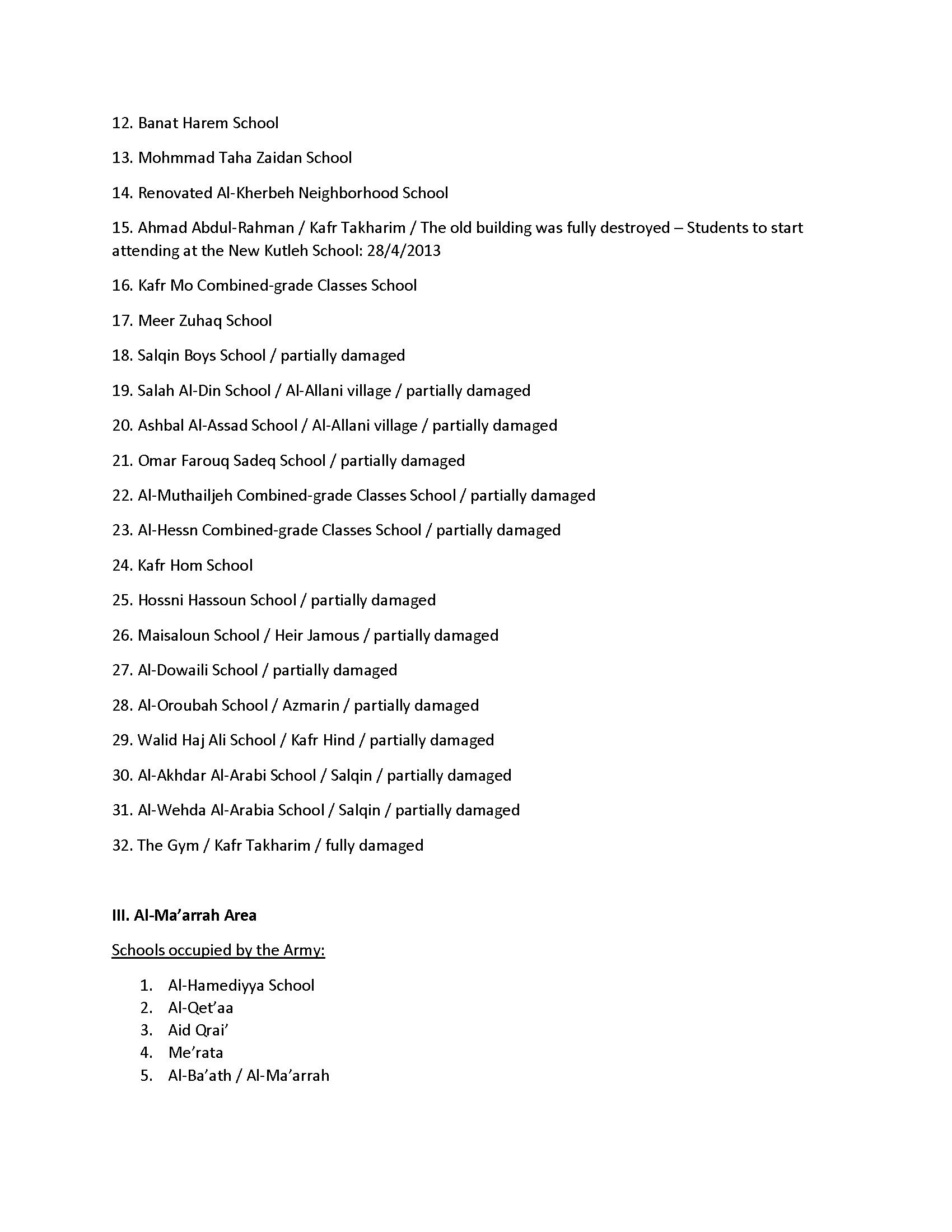
This is not the first time that the military use of schools in Syria has been documented. In fact, between 2013 and 2018, the UN verified 72 cases of the military use of schools in Syria, in addition to 23 incidents in 2019. Cases included occupation by Syrian government forces, ISIS, HTS, the YPG, and Turkish forces, among others. SJAC’s documents also include information on 42 distinct schools reportedly occupied by non-state armed groups. However, these documents are unique in providing details of government military use of schools as reported by the Syrian government’s own officials.
The military use of school buildings presents a clear danger to children. The presence of the military at education facilities leads to either shutting schools down, denying children their right to education, or places children in dangerously close proximity to the military, often exposing them to possible exploitation and recruitment. Furthermore, the use of schools as military bases negates their status as civilian infrastructure, opening them up to military attack, which puts students and teachers at risk and can damage or destroy educational infrastructure.
Despite these risks, there has historically not been a clear ban on the military use of schools. However, concern over this issue has risen over the last decade, leading to a campaign to ban the military use of schools, strengthening the civilian status of schools, and further protecting children living through conflict. These efforts culminated in the Guidelines for protecting schools and universities from military use during armed conflict of 2014 and the Safe Schools Declaration of 2015. Since its creation, 106 UN member states have signed onto the declaration, committing to strengthening protections against schools, including banning military use. Syria is not among the signatories.
Protection of students and prevention of education-related violations may require distinct bodies of international law to view the right to education more comprehensively. International Human Rights Law imposes broad obligations on States to ensure the right to education. These obligations are mandated in various covenants ratified by States, including Syria, but enforcing State compliance is always an issue. International Humanitarian Law encourages State and non-State actors to prevent the hindrance of education within the context of armed conflict. However, the scope of education-related rights is viewed quite narrowly and only applies to specific scenarios. International Criminal Law could provide a useful avenue for recourse. Although the International Criminal Court statute specifically criminalizes the targeting and destruction of education-related property, use of schools for military purposes is not. Still, collateral effects of the misuse of schools could potentially fall within other categories of crimes, like persecution. Education-related violations go beyond a child’s inability to go to school or attend school in unsafe conditions. They directly lead to other violations, including the recruitment of children into armed groups and various forms of child exploitation, based on a child’s membership to a targeted group, such as communities in Syria with perceived political affiliations. Accordingly, expanding the view of what constitutes an education-related crime, as well as education-related obligations of State and non-State actors, would more effectively uphold the right to education.
The destruction of educational facilities, the injury and death of students and teachers while at school, and the denial of countless children their right to education has been one of the most horrifying and lasting consequences of the conflict in Syria. On this year’s International Day of Education, the international community should continue efforts to protect all schools as civilian spaces and to work towards the ban of military use of educational facilities in Syria and across the globe.
________________________________
For more information or to provide feedback, please contact SJAC at [email protected] and follow us on Facebook and Twitter.